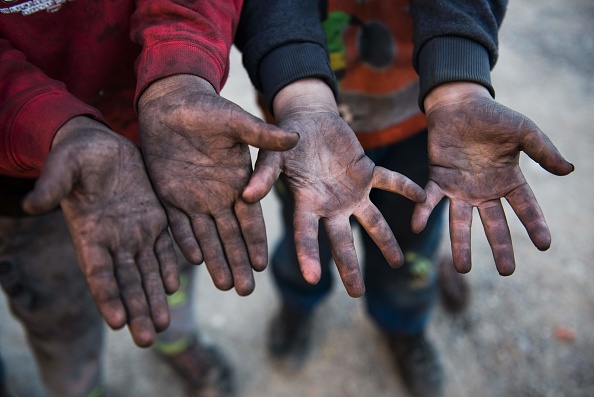Child labor thrives in West Africa despite stringent policies against it.
It’s the crack of dawn in Obuasi, Ghana, and Kwame Twumasi’s work has just begun on the farm owned by his uncle in the forest. Like every day, what lies ahead is hard manual labor.
He begins by using a chainsaw to clear a wooded area. This done, Twumasi climbs a cocoa tree and with a large machete, expertly cuts down cocoa bean pods. Five young boys wait patiently below ready to stuff the pods into large sacks that sometimes weigh as much as 90kg.
They slowly haul the sacks – at least three times their individual weight – on to their bare backs and lug them through the forest to the depot.
“Sometimes,the bags are so heavy that we struggle to drag them and it takes two people to move them to the depot.
Loading...
One day, the bag was so heavy that it broke and we were beaten badly,” says Twumasi.
Twumasi is 13 years old and has been working as a slave since the age of nine, when his mother passed away and he was sent to live with his uncle in the Ashanti Region. His story mirrors that of countless, hapless children being used as cheap labor by farmers all over West Africa to keep the costs of labor and production down.
“We barely make enough to survive. I am making about GHS200 ($41) a month as a cocoa farmer and there is a lot of competition out there as these international brands have no loyalty to us. We have to do what we can to keep costs low, and children help make that possible,” says Kofi (real name withheld), Twumasi’s uncle.
Chocolate is big business. Its raw material is the cocoa bean, which predominantly grows in the tropical climates of Western Africa, Asia and Latin America. Ghana and the Ivory Coast supply more than 70% of the world’s cocoa sold to a majority of chocolate companies.
The widespread use of child labor in West Africa has come under intense scrutiny owing primarily to the work of a handful of organizations and journalists.
“Most of the farms in West Africa supply cocoa to international giants… and they continue to squeeze impoverished farmers out of good margins and as a result they continue this practice of child slavery because that is the only way they can make ends meet,” says Mike Oppong, an agricultural economist in Ghana.
Child labor entails work that is mentally, physically, socially and morally harmful to children and deprives them of opportunities for schooling and development.
According to the National Bureau of Statistics (NBS) 2017 Multiple Cluster Survey (MICS),about 50.8% of Nigerian children, aged between five and 17, are involved in child labor.
“The north-central region in Nigeria has the highest burden of child labor of 56.8 percent. These numbers are extremely alarming as this region also accounts for the highest number of children working in hazardous conditions in the country,” says Maureen Zubie-Okolo, UNICEF’s monitoring and evaluation specialist.
In northern Nigeria, many families send children from rural to urban areas to live with Islamic teachers, known as mallams, and receive a Koranic education. These children, known as almajiri, may receive lessons, but teachers often force them to beg on the streets and surrender the money they collect, making them highly vulnerable to recruitment by Boko Haram, according to a report by the United States Department of Labor (DOL).
According to the UN’s International Labour Organization (ILO), Africa has the largest number of child laborers; 72.1 million African children are estimated to be in child labor and 31.5 million doing hazardous work.
Places like Benin City, in Nigeria, are a major human trafficking hub in Africa where many girls are trafficked to Europe for forced labor and sex work.
The problem is widespread and millions of children from West African countries experience forced labor, including begging on the streets and domestic work,” says Tosin Ajao, an economist in Abuja.
Landlocked Burkina Faso is wedged between Mali and Niger to the northwest and east, and borders Ghana on the north. Here, artisanal or small-scale mining is widespread, with thousands of people migrating here to join the gold rush.
According to DOL, in 2012, almost half of all children in Burkina Faso younger than 18 were engaged in some type of work with many of them toiling in the agriculture and mining sectors where they are exposed to chemical hazards, hazardous machinery and heavy labor.
The ILO estimates that 30% to 50% of the mine workers in western and north central Africa are younger than 18. Extreme poverty has exacerbated this epidemic.
The problem of child labor in Africa requires urgent attention in order to support governments to meet the Sustainable Development Goal (SDG) 8.7 to end all forms of child labor by 2025 and forced labor, trafficking and modern slavery by 2030.
To tackle this, governments need to raise awareness and ensure social protection, education of current and at-risk child laborers, as well as strengthen institutional capacity and policies.
Hopefully, they will, soon.
Loading...
